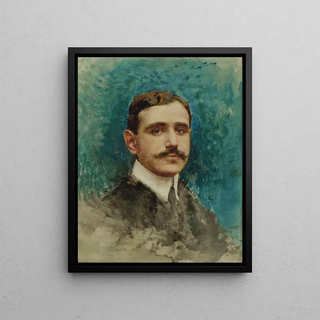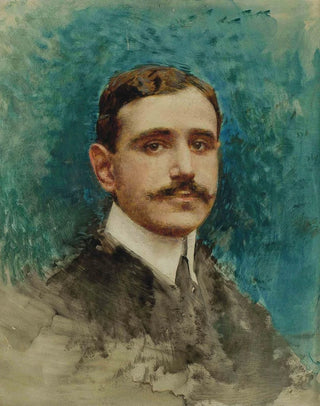Art print | Portrait of a Man - Léon Bonnat


View from behind

Frame (optional)
Portrait of a Man - Léon Bonnat – Captivating Introduction
The "Portrait of a Man" by Léon Bonnat is a work that captures attention through its psychological depth and striking realism. Created at the end of the 19th century, this painting demonstrates the technical mastery and artistic innovation of its time. By contemplating this portrait, the viewer is immediately immersed in the subject's intimate universe, whose gaze seems to tell a story far beyond the simple features of his face. This work, both classic and modern, invites reflection on identity and human emotion—universal themes that resonate across time.
Style and uniqueness of the work
Bonnat's work stands out for a meticulous approach to detail and a skillful use of light and shadow. The "Portrait of a Man" perfectly illustrates this technique, where each brushstroke contributes to creating a lively and vibrant atmosphere. The treatment of textures, especially in the clothing and hair of the subject, reveals a particular attention to the elements that compose the visual identity of the depicted man. The color palette, both rich and subtle, enhances the emotional intensity of the piece, inviting the viewer to delve into the thoughts and feelings of this enigmatic character. This portrait does not merely capture an image; it evokes a presence, a story, a soul.
The artist and his influence
Léon Bonnat, born in 1833, is recognized as one of the most influential painters of his time. Trained at the École des Beaux-Arts in Paris, he mastered combining classical techniques with a modern vision of art. Bonnat was a mentor to many artists and left an indelible mark on the French artistic scene. His style, rooted in realism, was also influenced by Romanticism and pre-Impressionism, allowing him to create works that transcend eras. The "Portrait of a Man" is an emblematic example of his talent, illustrating the importance of the individual in art—a concept that will continue to inspire future generations of artists. Bonnat's work is an invitation to explore

Matte finish

View from behind

Frame (optional)
Portrait of a Man - Léon Bonnat – Captivating Introduction
The "Portrait of a Man" by Léon Bonnat is a work that captures attention through its psychological depth and striking realism. Created at the end of the 19th century, this painting demonstrates the technical mastery and artistic innovation of its time. By contemplating this portrait, the viewer is immediately immersed in the subject's intimate universe, whose gaze seems to tell a story far beyond the simple features of his face. This work, both classic and modern, invites reflection on identity and human emotion—universal themes that resonate across time.
Style and uniqueness of the work
Bonnat's work stands out for a meticulous approach to detail and a skillful use of light and shadow. The "Portrait of a Man" perfectly illustrates this technique, where each brushstroke contributes to creating a lively and vibrant atmosphere. The treatment of textures, especially in the clothing and hair of the subject, reveals a particular attention to the elements that compose the visual identity of the depicted man. The color palette, both rich and subtle, enhances the emotional intensity of the piece, inviting the viewer to delve into the thoughts and feelings of this enigmatic character. This portrait does not merely capture an image; it evokes a presence, a story, a soul.
The artist and his influence
Léon Bonnat, born in 1833, is recognized as one of the most influential painters of his time. Trained at the École des Beaux-Arts in Paris, he mastered combining classical techniques with a modern vision of art. Bonnat was a mentor to many artists and left an indelible mark on the French artistic scene. His style, rooted in realism, was also influenced by Romanticism and pre-Impressionism, allowing him to create works that transcend eras. The "Portrait of a Man" is an emblematic example of his talent, illustrating the importance of the individual in art—a concept that will continue to inspire future generations of artists. Bonnat's work is an invitation to explore






